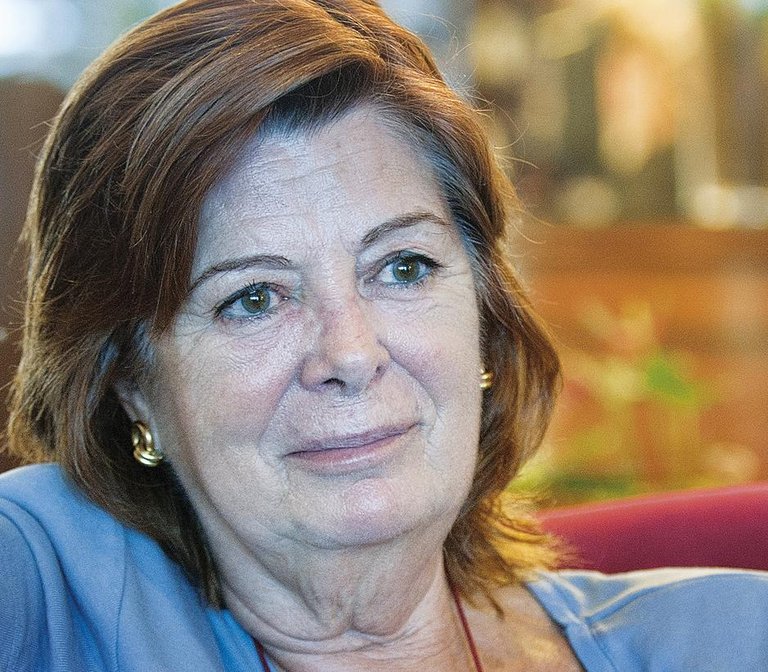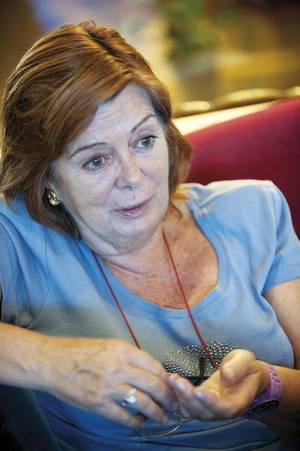"At one point the fear of materials being harmful was lost and it was found that they could also benefit"

Yes. Initially these materials were not designed but used. They were materials that could be introduced into the human body and that did not cause extraordinary damage, and that served to form some disease. So they began to be used. They were first-generation materials and were inert. Later, they came from the second generation: at one point the fear that the materials were harmful was lost and it was observed that they can also bring benefits such as bone regeneration. Second-generation materials are biodegradable and bioactive [they favor tissue response in a certain way]. Finally, XX. At the end of the 20th century, people working with biomaterials are aware that their main protagonist is biology, not material, and that materials must be at the service of biology. That is when the third generation of materials begins. And now we are working on them.
No, of course. The first and second generation of medicine are currently used, while the third generation are still at the research level. And at the level of research, we also try to improve these implants: we see if it is possible to give greater added value or better finish… that is, we try to make adjustments and improve them, avoid the problems they give, find solutions or find alternatives to avoid problems. Therefore, yes, we continue to use and improve those created above.
There were more such cases before. It is what is known as 'serendipity' and in science has always occurred: to seek one thing is to find another. However, it is essential to have a level of knowledge to know that what you have in your hands can serve something else. If not, you don't realize it.
Therefore, going back to the question, things like this happened in the first generation materials: it was random that a certain material could be useful. In fact, the materials were not designed for medicine but for other uses, and it was seen that the body did not reject and worked to solve some problem. The goal was to avoid rare and non-toxic reactions. But as the world of biomaterials develops, things are no longer like that. There is currently a biomaterials industry that is designed specifically for what you want to repair.
In our group we have diversified research lines. On the one hand, the classic part is the formation of scaffolds and ceramic replacements, the improvement of implants so that bacteria can not add them, for example, the improvement of the process of introducing drugs inside ceramics. In general, we try to improve what already exists. And on the other hand, we are working on a more recent aspect, including nanotechnology-related research. For example, we are creating smart materials capable of releasing drugs and regenerating bone; we want a single application to have both functions.
Yes, no doubt. For example, I worked at a time with small particle size magnetic materials, used in the magnetic recording of audio and video tapes. It was very important to create very small particles. I specialized in the synthesis of materials controlling the size and morphology of particles, and what I learned has come very well in current studies. And now I'm using the equipment I've learned to use for the technologies of the time to manufacture nanoparticles.
In one of the lines we have in hand we have created a matrix with pores in which we can put drugs. In this specific case we are introducing cytotoxic, as we want to use them to treat cancer. Well, together with the matrix we have created magnetic nanoparticles of the same dimension as the pores of the matrix. And we have functioned both materials (matrix on the one hand and nanoparticles on the other) with DNA auxiliary filaments. When joined, the filaments are joined and the pores are closed, making the nanoparticles plug function. When we reach the tissue or part of the body that we want to use, we submit them to a magnetic field, the magnetic nanoparticles are released and the medicine is removed.
Well, our bones are composite materials, on the one hand they have an organic component, a matrix and on the other an inorganic component, small nanocrystals of apatite. Therefore, the idea is to provide externally an inorganic component (ceramic), before which the body will respond and generate all biological components. The cells produce the bone.
The goal of ceramics is to provide some stability for the bone to regenerate. In addition, being very biodegradable and bioactive, the speed of removal of the ceramic scaffold must be equivalent to the speed of bone formation. It is the key for one to disappear as the other arises. In this way, when the bone is fully formed, nothing will remain of what has been put.
Although you can get the bone to suffer without introducing anything, you can also add elements that favor the process and accelerate. In addition to scaffolding, the regeneration process involves cells and growth factors and, in general, signals that attract bone producing cells. Then, when there has been a problem and a piece of bone has been removed, in addition to putting ceramics, tissue engineering can be done, for example, sowing cells and adding growth factors.
Doctors always say that the autologous bone, of the patient himself, is a golden pattern, that nothing will respond better. But for this it is necessary to perform two operations: on the one hand, you must remove the bone from one part of the body and, on the other, place it where you need it. And also, keep in mind that this is done in people with very damaged bones. Therefore, it is not always possible. But, undoubtedly, the personal tissue is the most biocompatible and the best possible tissue.
As already indicated, they remain at the research level. That is, we are investigating. I think in the near future new solutions will come out. But they will not be revolutionary solutions. That is, I don't think they never abandon those that are currently used. Fortunately, our most common problems do not require complex solutions. These materials are for serious problems, very special, very difficult. But they also need a solution.
Buletina
Bidali zure helbide elektronikoa eta jaso asteroko buletina zure sarrera-ontzian













